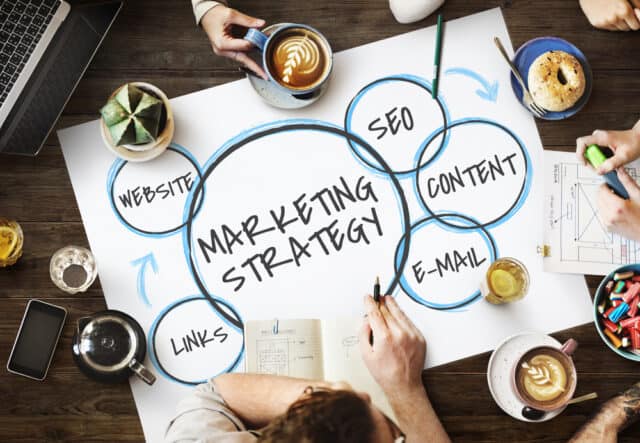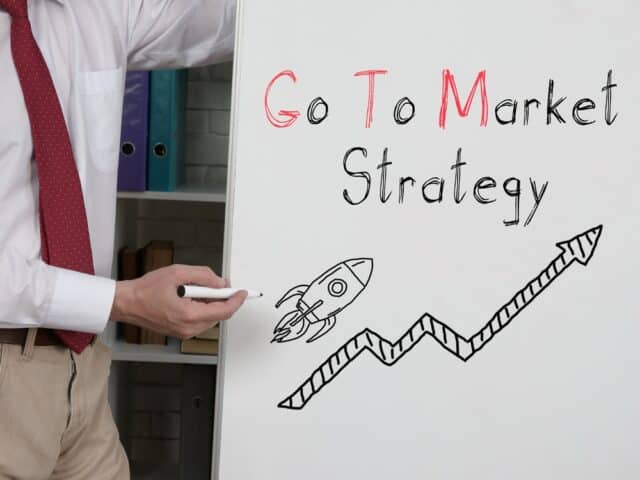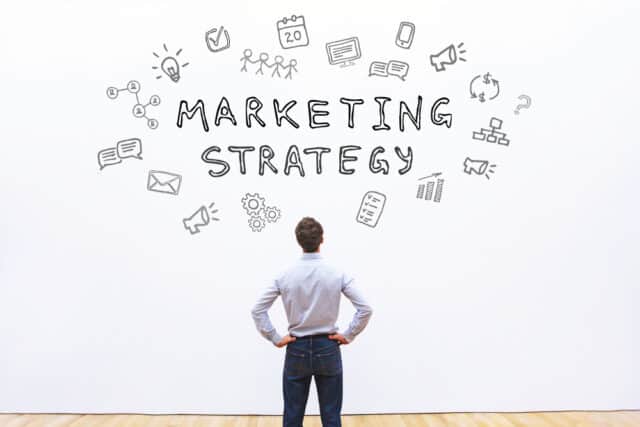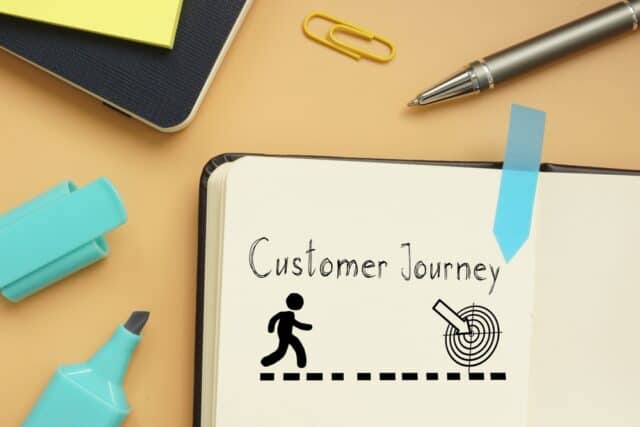How can an effective go to market strategy help businesses?
An effective go to market strategy can help you identify your potential clients, design your marketing, and place your product for launch. Most of the time, navigating that process is simple.
Besides keeping important business units on the same page, a go to market strategy (GTM) approach enables you to efficiently iterate on your product and respond to market demands.

The last thing you want to do when launching a new product is to introduce it without a comprehensive go to market (GTM) plan framework.
Without good planning, it’s impossible to tell if you’re pursuing the correct audience, entering a market too early or late, or aiming for one that’s over-saturated with comparable products. You would definitely not want to take the chance of wasting time and money on developing a product that wouldn’t be successful.
You need to create a well-thought-out, doable, and efficient go to market plan if you want to prevent those potentially disastrous hiccups and hangups.
Go to Market Strategy

A GTM strategy is a detailed plan made to successfully introduce a product to the market. A strong GTM strategy often involves a target audience identification, a marketing plan, and a sales strategy.
A GTM approach should identify a market issue and present the product as a potential solution, even if every product and market will be unique.
A GTM strategy is, to put it simply, how a business introduces a product to the market. It is a practical roadmap that assesses a solution’s likelihood of success and forecasts its performance using market research, precedents, and competitor data.
It’s also important to remember that go to market strategies aren’t limited to tangible goods. For a new service, a new division of your firm, or even a brand-new venture, you can develop a GTM plan.
Why is a go to market strategy required?
Even if you invest a lot of time, money, effort, and resources into creating a new product or service, your project could fail if your GTM strategy is poorly thought out. Even some of the most well-known brands have had go to market failures.
Steve Jobs managed one of Apple’s biggest failures, the Apple Lisa computer, before introducing the groundbreaking iPhone in the 1980s. Only 10,000 copies of Lisa were sold, despite having some of the best graphics technology available.
Despite its weak processing capability, critics blame Lisa’s misleading advertisements and exorbitant pricing for its demise. While Steve Jobs and Apple have already recovered, smaller businesses may stand to lose much more if they release a subpar product.
It’s critical to develop a go to market plan as you create something new, one that is tailored to meet your budget and buyer persona. The majority of errors and oversights that might ruin the launch of a new product can be avoided by developing a go to market strategy.
Oversaturation as well as poor product-market fit could prevent a successful launch, even if the offering is well-designed and distinctive. A go to market strategy can help you manage expectations and iron out any wrinkles before you spend money on bringing a product to market, even if it can’t ensure success.
We have a simple go to market strategy template that may help you create a plan that places your product right in front of your target audience to assist you in this process.
Go To Market Plan Methodologies

The funnel and the flywheel are the two main approaches for creating a go to market strategy. The flywheel technique employs inbound marketing and other strategies to create enduring customer relationships, in contrast to the conventional, one-off funnel method, which focuses on attracting prospects and nurturing them into sales.
The funnel focuses on the observation, careful thought, and decision stages of the buyer’s journey, whereas the circular flywheel is focused on luring, attracting, and satisfying prospects, leads, and customers.
When a lead converts to a customer, the flywheel keeps spinning as the business must continue to draw them in, keep them interested, and satisfy them with top-notch customer service, fresh content, and possibly new products.
You should follow these phases in your planning approach, whether you’ve chosen to use the flywheel or the funnel.
Marketing Strategy – GTM Strategy’s Component

There are four major components of a GTM plan before sharing my go to market strategy structure. All of these topics are covered below, so you don’t have to answer these questions right now. Still, they’re worth remembering, especially if you’re designing a never-before-seen product. The following are the essential elements of a go to market strategy:
Product-Market Fit:
What problem (s) is your product designed to solve?
Target Market:
Who is affected by the issue that your product addresses? What price range are they ready to accept for a fix? What are the frustrations and pain areas you can ease?
Competition and Demand:
Who else is selling what you’re selling? Is there a demand for the products, or is it already saturated?
Distribution:
How will the products or services be marketed? A website, an app, or an independent distributor?
How to Create a Go to Market Plan?
Understanding how your target audience uses different platforms and devices is crucial because the digital marketing landscape is always growing.
This tutorial will show you how to leverage behavioral data to create a go-to-market plan that allows you to meet clients where they are rather than attempting to contact them everywhere. Marketers must examine the following issues as part of this approach.
- Determine the purchasing center and personalities.
- To assist with message recognition, make a value matrix.
- Try out your messaging.
- Tweak your ads, considering the findings from your testing, before implementing them widely.
- Recognize your buyer’s path.
- Choose one or more of the four major selling strategies.
- To boost brand recognition as well as demand generation, use either inbound or outbound techniques.
- Boost your pipeline and increase conversion rates.
- Examine the sales cycle and shorten it.
- Lower the cost of acquiring customers.
- Plan how to reach out to your current clientele.
- As you go, change and improve.
- Keep impressing your clients.
- Produce content to attract inbound prospects.
You can begin developing your go to market strategy after you understand where your consumers are coming from and how they connect with your brand.
Determine the purchasing center and personas.

The first step in developing a successful marketing strategy is determining your target audience. This involves knowing who you’re aiming to target, and how and why they use your products.
Once you have this knowledge, you will prioritize your efforts. You must first identify your consumers. You may ponder who your perfect customer is, but there are ways to identify your target audience.
Consider factors like age, gender, average income, geography, education, career, and even passions. Or maybe you want to understand your customer’s issue and how they resolve it.
After you’ve chosen your intended demographic, you must understand the purchasing cycle. Most businesses follow a similar trend. First, they identify a need or an opportunity.
Then they look for solutions. They then weigh their possibilities. Finally, they choose a vendor, implement solutions, and put them to use. You can carry out usability testing, interviews, or surveys to assist you in identifying your target audience.
You can use SurveyMonkey, Qualtrics, or Typeform to quickly conduct an online survey to collect feedback. Alternately, you might speak with potential clients personally. LinkedIn is a good place to start.
After you’ve determined who your clients are, the next step is to learn more about them. What issues do they encounter? How do they address those issues? Why did they choose your product over another option?
You can use these queries to create personas, which are fictitious depictions of certain customers based on actual data.
Personas are useful because they let you see yourself conversing with each kind of client. They provide you with clarity on how your product integrates into someone else’s life and assist you in seeing things from their point of view.
Personas can be useful to anyone involved in selling; they are not simply for salespeople. Let’s take the example of a digital marketing campaign you are working on. A small businessperson who needs to keep track of expenses could be your persona. He uses excel spreadsheets to keep everything organized.
He puts a lot of effort into expanding his company, so he knows that he doesn’t want to overspend. He wants to cut expenditures while increasing revenue.
To assist with message recognition, make a value matrix.

After you’ve finished creating buyer personas, it’s time to step back and consider what your customers are searching for. Understanding their demands, wants, and pain points will help you determine how your solution may ease those issues.
This procedure, known as “value mapping,” is essential to creating a positive client experience. To get started, create a spreadsheet where you can enter information about each persona. Publish the names of each buyer persona in a single column.
Then, in a different column, list the problems they face every day. List the goods and services that answer those problems in a third column. The material should then be arranged into rows. A different persona should be represented by each row. For instance, create three rows if there are three buyer personas. List the persona’s name in each row, followed by the issues they have.
Now review the data once more. Do the goods and services offered under each persona have anything in common? Does a single persona employ many remedies?
When arranging the data, these are crucial concerns to take into account. After finishing, examine the outcomes. Is everything uniformly consistent? Or do you detect contradictions? Any patterns or trends should be noted.
What does my product offer? You might wonder at this point. Consider the messages you want to get through to your audience as you consider your response to this question.
Which specific advantages may you offer? How can you connect these advantages to the issues your clients are facing?
After you’ve determined the major advantages, write a brief summary of each advantage. Include a few sentences elaborating on the significance of each benefit to your target audience. A comprehensive value matrix is now available. Use it to create your upcoming messaging campaign.
Try out your messaging.
It’s time to evaluate your messaging once you understand what kind of content resonates with your audience and brand the most.
This entails making various advertisements for various channels and evaluating how well each one converts. It’s crucial to concentrate on getting the most value for your money when you first start out.
Ensure you’re targeting the right people based on their wants and interests if you’re investing money in advertising. Three options are available to you: the medium via which you promote, the target market you hope to connect with; and the information you hope to deliver.
Choosing a testing location is the first step. Consider your audience, the content you want to deliver, and the medium you want to use. Then evaluate each channel’s effectiveness. Test more samples until you identify the ones that convert.
Tweak your ads, considering the findings from your testing, before implementing them widely.

Businesses can target particular audiences on LinkedIn, depending on the sector, job title, functional area, and size of the company. When running an internet campaign, it makes sense to evaluate what performs best for each type of audience. Utilize the data you get to improve your approach and manage your spending.
Recognize your buyer’s path.
Some important information about your clients will be provided by your persona study. You put a lot of effort into developing your persona profiles. You may now wish to understand their mentality. Now you want to delve into what gets each persona ticking, though.
Here, the main objective is to comprehend a potential buyer’s journey better from their point of view. This entails knowing the questions that are most crucial to them throughout the discovery phase and why those questions are significant.
You can obtain an understanding of the customers’ backgrounds and the issues they are attempting to resolve by discovering their driving forces. You can concentrate your messaging and advertising on the most pertinent subjects by comprehending the buyer’s journey.

You should begin by outlining the buyer’s journey. It is your responsibility to note every step you take, even the ones that don’t make sense. The “research” stage is skipped by one individual; why?
What transpires when a person is completely unaware of a problem? How do people make their purchasing decisions? These are but a few instances of the items that you might find during your journey.
You’ll see patterns after you plan out the buyer’s path. You might discover, for instance, that particular personality types frequently travel similar routes. Or perhaps you’ve noticed that some customers never proceed to the last stage.
You can learn more about your audience by carefully examining your statistics. You’ll gain a deeper understanding of their motivations and their issues. Additionally, you’ll learn more regarding their troubles and concerns.
As soon as you have a solid understanding of your buyer’s path, you can start creating communications that precisely address their needs. You will be conversing with the same people all through the process, so you will be prepared.
Choose one or more of the four major selling strategies.
You’ve completed all the groundwork; the next step is to choose a plan of action to introduce your product to the market. It’s critical to consider your method’s complexity, scalability, and cost because no single approach will be effective for every product or market.
Typically, there are four go to market sales methods, each of which is tailored to a particular product and company model.
Using a self-service approach

When a customer makes an independent purchase, it is self-service. This business-to-consumer strategy is frequently used when a customer may discover and purchase a product online via a website like Netflix or Amazon.
Simple products with a relatively low price and big sales volumes are the greatest candidates for this. It’s challenging to construct, but when it does, it has a quick sales cycle, requires no upfront investment to recruit salespeople, and is very profitable.
Instead of a sales team, you’ll need a marketing team to publicize your website and boost conversions. Experts in growth marketing, performance marketing, and content marketing would likely make up the core marketing team. However, there may also be other team members.
Business strategy for inside sales

The inside sales business model is used when a sales representative must develop a prospect before a contract can be closed. With a product of moderate complexity and cost, this kind of model performs best.
The length of the sales cycle varies from a few weeks to a few months. Here, you’ll invest in a sales crew, but inside sales representatives are more cost-effective than field representatives.
This business is fairly simple to develop and grow as you add additional team members, and it has the potential to be successful with huge sales volumes. In this arrangement, the sales team is often made up of a sales manager and a few representatives.
The Business Model for Field Sales
When you have a whole sales organization that closes big business agreements, that is the field sales business model. These are frequently complicated products with high prices, which also means that there are frequently few offers and a lengthy sales cycle.
Because of the high salaries and experience of the field salespeople, the sales team in this model is frequently quite expensive. Because it costs time and money to recruit and train a whole sales staff, this model is simple to create but more challenging to scale.
A sales manager, field representatives, sales engineers, a team of sales development representatives (SDR), and sales operations are among the group’s members.
Channel Model
Finally, in the channel model, a third-party partner or agency sells your goods on your behalf. As it might be a challenge to attract and educate people about the advantages of your product, this is a challenge to construct.
They frequently have lower sales motivation than your own sales team would. However, because you don’t have to pay for your own sales crew, this strategy is inexpensive.
It functions best when the product aligns with the partner’s interests. For instance, if you offer phone cases, you might wish to associate with companies like Samsung or Apple who sell related products. Depending on the sector or size of your clientele, you can combine and match these approaches.
Businesses should scale gradually rather than continuing to invest in a costly sales team too soon.
To boost brand recognition as well as demand generation, use either inbound or outbound techniques.

Now you must attract the interest of your target market in order to fill your pipeline. Demand generation, which may be accomplished through both inbound and outbound tactics, is how this happens.
With inbound, customers find your product through marketing initiatives and contact you or ask about you at their own will. Social networking, content, or paid advertisements that lead to a landing page are a few examples of channels that generate organic inbound traffic.
When a salesperson makes a cold outreach contact with a lead, this is known as outbound demand generation. They might accomplish this by contacting a contact list, sending friendly emails, calling leads, or gathering leads at trade shows.
After generating interest using these techniques, sales discussions start, and the leads are guided to additional instructional resources before entering the sales funnel.
Enhance your pipeline and increase conversion rates.
Selecting a sales strategy and developing a demand creation process are not sufficient for growth.
You must improve. Sales is a game of numbers, and tracking your progress is the only way to win. The key performance indicators (KPIs) for managing a sales executive are volume, conversion rate, and duration.
You can determine your overall conversion rate by comparing the volume of opportunities in your pipeline to the number of closed agreements.
Optimizing the conversion rate across stages is even more crucial. Opportunities will go through several qualification processes as they go through the funnel, and you’ll want to keep note of when they exit the funnel and why.
This needs to be measured both for the entire flywheel and for each sales rep. You can use this information to determine where each staff member needs to step up and perhaps get additional instruction. To reduce each rep’s sales cycle, customize your sales coaching strategies.
To determine who is more effective and quick at a certain stage, compare time and conversion rate. Keep track of the number of chances each rep converts and the point in the process at which they leave.
In order to save time, effort, and money, it is best if unqualified opportunities are eliminated as soon as possible.
Examine the sales cycle and shorten it.
Last, keep track of how long your sales cycle is. This is how long it would take for an opportunity to get from the top of the sales funnel to being a closed or successful deal.
The conversion between each stage should be sped up. This can be achieved by recognizing typical objections (and improving processes to eliminate them before they arise), doing continual lead nurturing, and coming up with ideas for how to locate the most suitable clients.
Lower the cost of acquiring customers.
You’ll also need to reduce the expense of acquiring new customers as a business owner. At first, this will be incredibly expensive, but as time passes on, you’ll need to optimise your procedures to lower this cost or you’ll end up losing more funds than you gain. A cost per $1 is a unit used to show the expense of getting a new client or contract.
Your marketing efforts will have less of an influence on your PNL and generate more profit per customer, the lower the cost of client acquisition.
Plan how to reach out to your current clientele.
There is a well-known saying in the industry that says it costs seven times as much to get new clients as it does to work with existing ones. That’s because if you’re giving customers a terrific shopping experience, they already know, like, and trust you.
Renewals, cross-selling, and upselling provide the greatest potential for businesses to earn more and gain revenue.
Many people view sales as a mysterious black box. Business executives may, however, enhance their processes to increase productivity thanks to analytics and the new sales AI solutions that are emerging.
As you go, change and improve.
Entrepreneurs who possess specific abilities are not the only ones who can build a successful business. You’ve probably built your product, and creating a corporation is a process that is fairly similar.
Throughout the process, you must remain strategic and work to improve. You can create a firm if you take your time and keep improving. Revisit the parts of your plan that need change. Keep track of what is working and come up with ideas for how to build on it.
Keep impressing your clients.
It’s not how well a SaaS product transforms leads into paying customers that matters most for its success. It’s important to keep those clients and keep them content over time.
The major aim of this stage is to guarantee that your customers are satisfied with your brand and goods. You want to ensure that customers continue to use your services because they find them valuable.
You’ll put a lot of effort into this phase to keep and expand your consumer base. You’ll make every effort to keep current clients while luring new ones. Developing strategies for generating positive word-of-mouth publicity for your brand and goods will be part of the process.
Produce content to attract inbound prospects.
The technique of bringing traffic to your website through content marketing is known as inbound marketing. While it’s true that certain firms do organically attract their target audience, the vast majority employ paid advertising efforts to do it.
Inbound marketing, however, differs significantly from conventional types of advertising like print advertisements, radio commercials, television advertisements, etc. because it focuses on disseminating valuable information instead of making a direct sale.
According to HubSpot, there are four major categories of inbound marketing:
Blogging
You can help your target audience by routinely writing blog entries and publishing them online. You can post articles and how-to guides based on recent developments in your industry.
Social networking sites
If you publish content on social media platforms like Facebook, Tumblr, LinkedIn, Instagram, Reddit, and Snapchat, potential customers will see your brand.
Optimization for search engines
You may improve your chances of being found online by optimizing your site for search engines like Google, Bing, Yahoo!, and others. Your website shows up near the top of the list when someone searches for a subject related to your specialty, increasing the likelihood that they will click it.
Email Promotion
You may establish relationships with customers and keep them informed about new goods and services by sending emails to existing and prospective customers.
How is content marketing carried out?

The process of keyword research, production, and measurement is circular. Identify keywords that apply to your product, evaluate their volume and competitiveness, and find out who is still ranking for them.
Create a list of possible content themes incorporating that term. Look for existing articles on these subjects to help you prepare your content calendar.
Top-of-Funnel Content
When individuals become aware of your company or brand, the funnel stage starts. At this point, the key factor influencing whether anyone becomes a customer is awareness.
There are various ways to contribute to raising awareness, including producing educational and entertaining content, as well as information that fosters trust or makes people laugh. We advise writing blog posts and making videos about industry-related topics, apart from sharing content on social media channels.
Think about the kinds of information that might be of interest to your audience. If you sell software, for instance, you might wish to produce tutorials on how to use the most recent version.
You might also share advice on how to prepare the tastiest cuisine if you own a restaurant. Prospects consider purchasing once they develop an interest in your company or brand. Lead generation comes into play in this situation.
You may either use paid advertising for lead generation or find people who are really excited about your goods or services and communicate with them directly. Include a very clear call to action if you provide free samples or discounts.
Try to include jokes or memes in your blog posts and videos because people love to learn while laughing. You want to give individuals information that will aid in their decision-making when they choose to purchase something.
In other words, you want to educate and entertain them. Here, you need to convince them that your strategy is better than the alternatives. To accomplish this, you’ll need to evaluate your solution against those provided by rivals.
To illustrate the advantages of your product or service, you can use infographics, practical examples, client testimonials, case studies, video demos, and even live webinars. It’s time to complete the deal once you’ve persuaded prospects that your product is superior to competitors’.
The Middle of the Funnel Content
The first step in the marketing process is the funnel stage. Prospects are introduced to your company, goods, or services here. The goal of middle-of-funnel content is to inform readers of what you offer, how it functions, and why it’s important.
The following stage of the sales cycle, known as flywheel goals, is where leads are attracted. They aid in the transformation of interested parties into qualified leads. At this point, your target market is aware of your service or is searching for associated solutions.
Which types of material do you provide to draw in leads? What subject should the content cover? Do you have any plans to promote your email campaign?
Bottom-of-Funnel Content
According to a recent survey, marketers are now spending less time than ever before developing content. But even if it could appear to be a good thing, creating excellent material still has value.
In fact, there is much more value in producing content that appeals to readers near the bottom of the sales funnel—when they are still considering making a purchase but aren’t quite ready. This kind of material helps attract and convert leads into customers.
The research discovered that lead generation, topic, and promo method are the three categories into which material aimed at the bottom of the funnel often belongs. Blog articles, infographics, videos, and other types of content that address problems, inquiries, and subjects relevant to an industry are included.
Landing pages, pop-up ads, and ebooks are examples of promotional tactics that explain how to use the supplied good or service.
The last type of lead generation content is landing pages, email campaigns, and social media ads that encourage visitors to sign up for demos or trials.
Conclusion
You’ll spend a lot of time planning how to turn leads into paying customers when you launch your SaaS solution. But after you overcome the first obstacle, you’ll face a much bigger task.
How are you scaling? How can your user base be expanded? The solution is in your go to market plan.
It should reflect a complete understanding of your target market, including where they live, the issues they encounter, and what makes your product stand out from the competition.
Once you are aware of these components, you can create a strategy to draw in and keep your ideal client. Your go to market strategy will assist you in developing a captivating message and engaging content as well as assist you in reaching out to potential users.
Once you have determined your target market, your product, and your pricing strategy, it may take some trial and error, but it’s time to consider how you’ll eventually reach these potential clients.
The go to market strategy will play a part in this. Your entire marketing approach is essentially your go to market (GTM) strategy. Your website’s layout, design, production and sharing of content, participation in social platforms, email campaigns, as well as paid ads are all included.
Your conversion funnel, which outlines the processes you must take to convert visitors into customers, will be a part of your GTM strategy.
Last but not least, your GTM strategy will describe your sales strategy. This entails being aware of whether to employ cold calling or other direct outreach strategies and when to put the emphasis on fostering relationships with current clients.
Subscribe to our Newsletter
Sign up to receive email updates on new product announcements, exclusive sales and marketing content, special offers on email validation plans, and more.
We send curated content as per your preference and do not indulge in spam!
What would you like to know about
We’re committed to your privacy. TuxMailer uses the information you provide to us to contact you about our relevant content, products, and services. You may unsubscribe from these communications at any time. For more information, check out our privacy policy.



